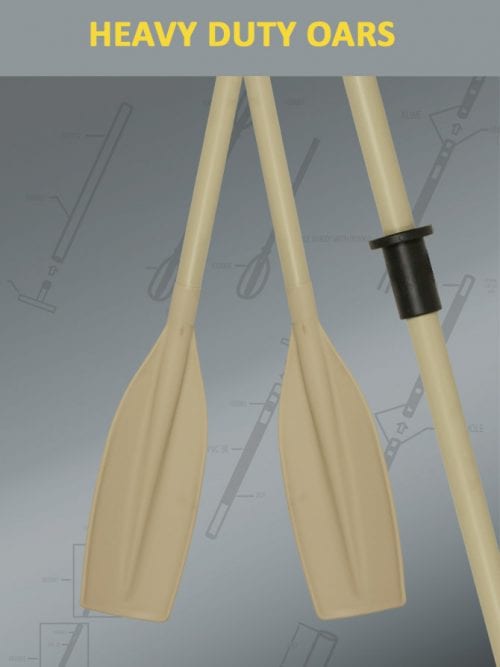How to Choose the Right Boat Oars
The boat oar you choose is going to have a direct impact on your level of comfort while rowing the boat. If it’s too short, then the steep angle required to row is going to make it much more difficult. If it’s too long, then it will add to the weight of the oar, also making it more difficult to row. Oars that are made of cheap materials will break. I’m sure you see the theme here. You want to avoid everything I just mentioned!
Determine the Perfect Length
Grab a measuring tape and take a measurement along the widest area of your boat. This is known as the “beam.” Double that measurement to get a very close estimate as to the size of the oar you need.
The weight of the boat will also play a factor in the length of the oar you need. If your boat is lightweight, then you will need to use longer oars. On the other hand, heavier boats are more difficult to navigate so they require shorter oars. Start with the size determined by measuring the beam and adjust it to match the weight of your boat.
If you are not sure about the weight, then you should get a longer oar and test it. You can always shorten an oar if it’s not efficient.
Choose the Type of Oar
Boat oars are built using a number of different materials but aluminum is definitely the most popular. It’s the most cost efficient with durability that can’t be beaten.
The type of blade that you choose will depend on the type of rowing that you’ll be doing. Narrow blades are essential when finesse is needed. Wider blades are much more powerful, but it’s not as easy to maneuver them. Narrow blades are also easier to drag through the water since there is less resistance.
Flexibility and resilience play an important role in the type of oar you choose. Aluminum oars are not going to have the flexibility of other types but they will have a higher resilience. However, aluminum oars are not so stiff that they cause fatigue. They provide just enough flexibility to make rowing an enjoyable experience.
Determine the Type of Shaft
The type of shaft flex that you decide is important. Oars that are highly flexible are going to have more wear on your joints and tendons if you are rowing for an extended time. However, the problem with using oars that do not have enough flex is that they break easier. You want just enough flexibility to make rowing comfortable.
That brings me to another important point. You should always carry at least one extra oar so that you have a replacement. If you can afford it, carry two extras.
Choosing a Style
There are two main styles of oars – the flat blade and the spoon blade. Most people think of flat bladed oars when they imagine oars since those are the most common. However, spoon blades are actually more efficient since they hold onto water for longer than flat blades.
With that said, your choice here will depend mostly on the type of rowing you’ll be doing. If you are planning to row the rivers where you’ll be performing a lot of back strokes, then you would want to choose a flat blade. If you are on smooth water where you won’t be doing a lot of back stroking, then spoon blades will be more efficient. However, they are also more expensive.
Choosing a boat oar will affect how difficult it is to navigate your boat so make sure that you take the time to get it right.




